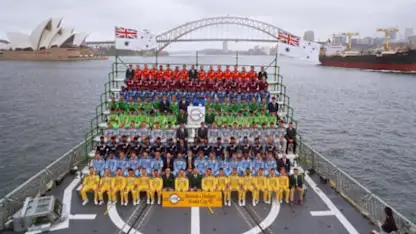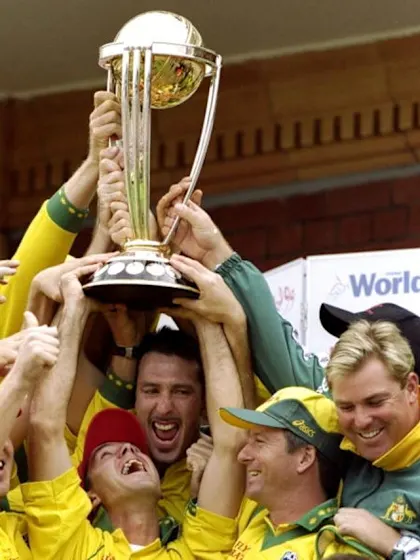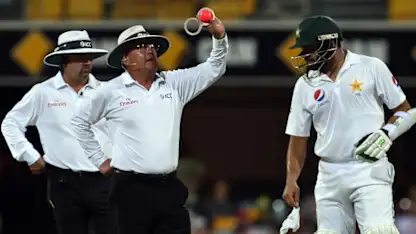ICC | About ICC
History of ICC
1989 - present - International Cricket Council
A special meeting in 1989 agreed a set of rules effectively banning from Test cricket players who had sporting links with South Africa. In July of the same year, the ICC had another name change - to International Cricket Council - but still retained the three initials that had served from its inception. This was also the year in which the practice of the President of MCC automatically assuming the chairmanship of ICC came to an end, but with the election of Colin Cowdrey, it was still a British hand at the helm. The newly-named organisation had more teeth: it was no longer confined to making recommendations to national governing bodies; now it could impose binding decisions on Members.
UAE joined as an Associate in 1990. January 1991 saw the first ICC meeting away from England - in Melbourne, where the discussions centered on the appointment of independent Match Referees, created to enforce the proposed new Code of Conduct for the players. In July, South Africa was re-admitted as full Members and the ban on players who had sporting connections with South Africa was revoked. Zimbabwe was admitted as a full Member, their first Test being in October 1992. Namibia joined as an Associate and Austria, Belgium, Brunei and Spain as Affiliates. A revised set of ICC Regulations was published.

The nine competing teams of the 1992 Cricket World Cup
The most far-reaching effect of the changes at this time was the creation, in 1993, of the post of Chief Executive of ICC, a position to which David Richards of the Australian Cricket Board was appointed. Then, in July, Sir Clyde Walcott, from Barbados, was elected the first non-British Chairman, in succession to Sir Colin Cowdrey, who had been very active in encouraging cricket development in countries with little tradition of the game.
Since its inception, the ICC had been run as a virtual appendix to MCC. Even after MCC's influence within the game in England had been curtailed by the formation of the Cricket Council and the Test and County Cricket Board in 1969, and after the club's annually changing President had no longer assumed the chairmanship of ICC, MCC's Secretary was still performing the same administrative function for ICC. But with Richards' appointment, this came to an end. Another change saw ICC with its own office for the first time, though this was still at Lord's, with a separate office soon established for commercial purposes in Monaco.
For thirty years, from the time of South Africa's withdrawal, England and Australia had enjoyed the status of 'Foundation members,' and this effectively meant that little could be achieved unless the two countries concurred. But with the implementation of the new Regulations, all this changed. England and Australia lost their special privilege, all Test playing countries now being of equal standing.
New technology was becoming available around this time to show with increasing accuracy the correctness of umpires' decisions. 1993 saw the first chance for umpires in Test matches to refer doubtful line decisions to a third umpire equipped with video playback facilities. By 1995, it had been agreed that TV replays should be available in Tests 'wherever possible' and that the third umpire should signal out with a red light and not out with a green. The following year, cameras were also permitted to pronounce whether a ball had crossed the boundary. In 1997, the third umpire could be called on to rule on the cleanness of catches. This was also the year in which, for the first time, the Duckworth-Lewis method of adjusting targets in rain-affected matches was trialled by ICC in ODIs.
New countries joining ICC were Ireland (1993), Scotland (1994) and Italy (1995) as Associates, and Greece, Thailand, Vanuatu and Portugal as Affiliates, whilst Nepal was raised to Associate status in 1996. Problems occurred in 1996, when there was much bitter wrangling as it became clear that no candidate could command the necessary two-thirds majority to succeed Sir Clyde Walcott, who was to retire from the chairmanship the following year. A meeting in Kuala Lumpur in March 1997 resolved the impasse with a revised ICC structure.

ICC Cricket World Cup winners 1999
Implementing proposals drawn up by Sir John Anderson, Chairman of New Zealand Cricket, ICC became an incorporated body with a President, an appointment which was to be assigned to a member country who would then nominate an individual to serve in the role for a period of three years. India was the choice, and Jagmohan Dalmiya became the first man to hold this new office, with the policy and direction of ICC now vested in an executive board comprising representatives of all the Test-playing nations plus three Associate members. Reporting to that board were committees covering cricket, development and finance and marketing.
Bangladesh's application for full membership was deferred in 1998, but France and Uganda were raised to Associates and Kuwait, Luxembourg and Malta became Affiliates. Match-fixing and betting by players and other officials had featured in the media: in April 1999, a Code of Conduct Commission under Lord Griffiths, a British law lord with first-class cricket experience, was set up to investigate the rumours. This was followed by the setting up of an anti-corruption unit under Sir Paul Condon, the former Commissioner of the Metropolitan Police in the United Kingdom.
In 2000, on the completion of Dalmiya's term in office, Malcolm Gray from Australia became President, and in July 2001, Malcolm Speed succeeded David Richards as Chief Executive. A full-time panel of eight elite umpires, who would stand in all Test matches, was created in 2002, one umpire from a non-competing country having stood with an official of the home country in all Tests since 1994. In March 2004, a new ICC Intercontinental Cup was inaugurated for major Associate members and the matches were granted first-class status.

ICC umpires inspect the pink ball during a day/night test match
In August 2005, ICC left its base at Lord's to set up its new headquarters in Dubai, there was also a crucial development in the same year when it was decided that the International Women's Cricket Council would merge with the existing International Cricket Council to form one unified body to manage and develop cricket worldwide.
In Dubai, the ICC was under the presidency of David Morgan until 2010, until he was succeeded by Sharad Pawar until 2012, who was eventually replaced by Alan Issac until 2014. Mustafa Kamal served in the position for a year, until the final standing President Zaheer Abbas undertook the role in 2015. Then in 2016 the ICC elected its first independent Chairman, Mr Shashank Manohar, a role he continues in to the current day.
The current Chief Executive former South African player David Richardson has been in post since 2012, taking over from Haroon Lorgat who was in the role from 2008 to 2012, succeeding Speed. ICC continues to face such matters as match-fixing, player conduct, the use of floodlights and the challenge of balancing the three formats of the game, including the recent inception of day/night Test matches.